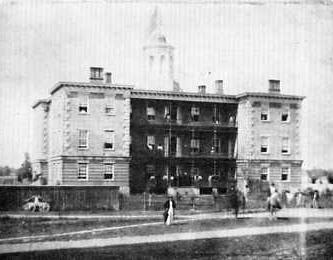Comparison on Suburbia, Levittown, and Tenements, Evansville
Levittown and Evansville
It is a stark contrast between the Tenements homes of Evansville, Indiana and the clean streets and homes of suburbia in Levittown. Levittown and Evansville, Indiana, represent two very different approaches to housing and urban development in the United States, particularly during the mid-20th century.
Levittown pictured above boasted individual living conditions, where one's space was confined by their own 4 walls and it included a driveway and a yard. These houses had windows, and places where kids could safely play in an area where the only surrounding buildings, were homes, and the people who would be walking through were residents. Everyone had their own privacy and a place where they could create a home. This is the type of environment where parents would let their kids go out and play on the street. Here was where they could live in comfort and peace. The houses had color for variation and not to create monotony.
Schools, restaurants, and shops would pop up nearby to service the needs of these growing young communities. This allowed people to be away from the city but not away from the luxuries of what could be everyday living in Levittown.
Levittown contrasted with the tenement houses of Evansville, Indiana is great. The tenement homes of Evansville could have been described as the "one-room slum" where all the family would have was an open space as their living, dining, and cooking quarters. There would be children, mothers with their kids, all outside, children without shoes or running around playing. There was not as much order or privacy as what was achieved in Levittown. This place was a space where there was no real comfort. There was not as much safety and it was not clean or a healthy place for people to live.
In essence, these two housing models, while vastly different in their design and purpose, underline the idea that the physical layout of a community can significantly influence the sense of togetherness among its residents. Levittown and tenement housing in Evansville are symbolic of two distinct phases in American housing and urban development history, showcasing how different architectural and urban planning choices can shape the dynamics of communities and the bonds formed within them. They serve as historical snapshots of the evolving priorities and social structures in American society
:max_bytes(150000):strip_icc()/view-of-levittown--new-york-514867608-5ae49d2e3128340037f80e4f.jpg)


Comments
Post a Comment